Professional Lake Dredging Services in Eatonton, Georgia
Advanced hydraulic dredging technology, strategic sediment management, and ecological vegetation control for residential, commercial, and government waterfront properties across the Lake Oconee watershed.
Lake Dredging Services in Eatonton, GA
Lake Oconee Dredging brings specialized hydraulic dredging expertise to Eatonton and the surrounding Lake Oconee communities. From private waterfront estates to commercial marina operations and public water resources, we engineer custom solutions that meet the distinct environmental challenges and compliance standards facing Eatonton aquatic properties.
Our state-of-the-art hydraulic equipment and commitment to ecological stewardship enable Eatonton lakefront owners to restore navigable depths, manage invasive vegetation, and maximize the longevity of their waterfront investments. We bring the same level of dedication to your project that we would to our own lakefront property.
- Advanced hydraulic dredging systems for precision depth restoration in Eatonton
- Full-spectrum sediment handling from extraction through final placement
- Environmentally-responsible aquatic vegetation management programs
- Bank stabilization and erosion mitigation for Eatonton shorelines
- Strategic lake management planning and ongoing maintenance guidance
- Comprehensive permit coordination and environmental regulatory navigation
Complete Aquatic Solutions for Eatonton, Georgia
Delivering specialized dredging and lake management services engineered for the unique requirements of Eatonton waterfront property owners.
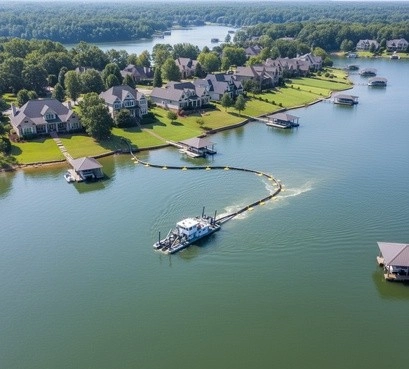
Precision Hydraulic Dredging
Our core service utilizes low-impact hydraulic dredges to effectively remove sediment, silt, and muck from coves, canals, and dock areas, restoring water depth and boat access for Eatonton waterfront properties.
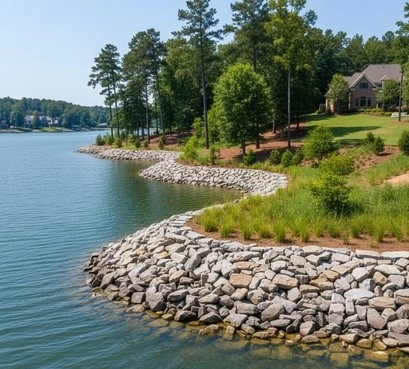
Bank Stabilization & Protection
We employ bio-engineered and hard-scape solutions like riprap and retaining walls to combat shoreline erosion, protecting your land investment and improving overall bank stability against wave action for Eatonton properties.
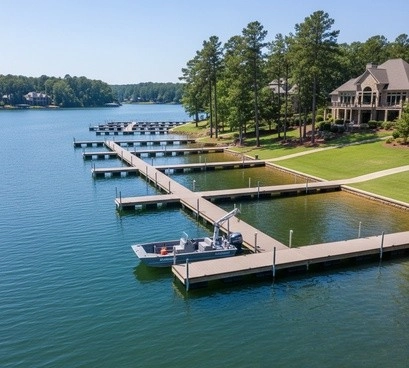
Marina & Dock Structure Care
Offering specialized services for dock flotation, structural inspection, and maintenance to ensure the longevity and safety of your marine infrastructure. We also clear sediment from slip areas to maintain optimal depth for Eatonton marinas.
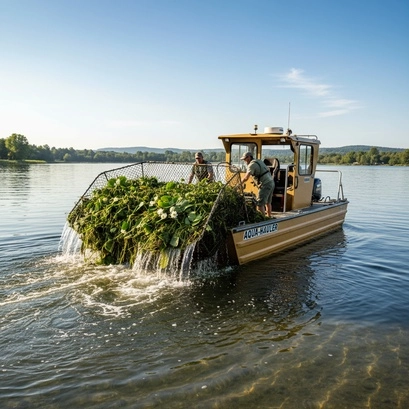
Aquatic Plant/Weed Removal
Targeted removal of nuisance aquatic vegetation like hydrilla, lily pads, and other invasive species that clog waterways and hinder recreation. We utilize mechanical removal methods to restore usability for Eatonton water bodies.
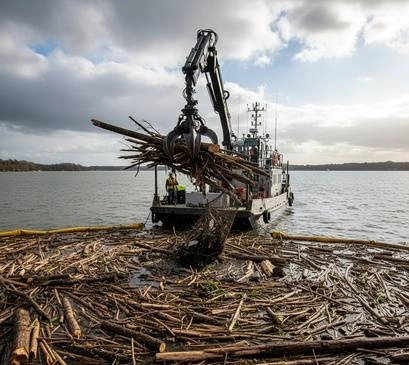
Emergency Storm & Debris Clearing
Rapid response services for clearing fallen trees, storm-related sediment deposits, and large debris that impede navigation and threaten dock stability. We ensure quick restoration of safe conditions after severe weather events in Eatonton.
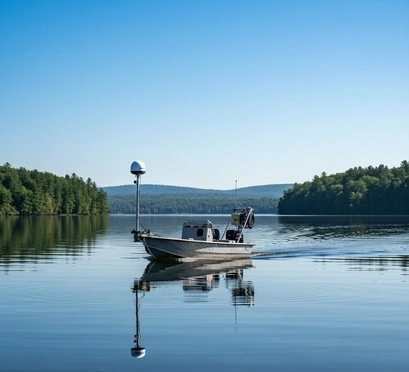
Hydrographic Survey & Analysis
Using advanced sonar and GPS technology, we provide detailed bathymetric surveys to map the lakebed, accurately determine sediment volume, and plan the most efficient dredging strategy for your Eatonton property.
Why Eatonton Residents Choose Lake Oconee Dredging
Trusted local expertise with a commitment to treating every project like our own
Not Located in Eatonton? Find Your City Below
We proudly serve communities throughout the Lake Oconee area and surrounding Georgia region
Common Questions About Lake Dredging in Eatonton, GA
What is the typical investment range for a lake dredging project?
Project costs are highly site-specific and depend on factors like sediment type, volume, and transport distance. We provide transparent, custom-tailored project quotes based on a detailed assessment. We encourage you to discuss your project specifics with our team for a fair and accurate estimate that aligns with your budget.
Are there effective strategies to minimize the overall cost of lake restoration dredging?
The highest variable cost for these projects is generally the logistics of trucking the dredged material offsite to a licensed disposal facility. Trucking fees depend on the distance to the disposal site, the volume of material, and current fuel costs. The most effective way to achieve significant savings is by establishing an area to safely contain and spread the nutrient-rich sediment on your property for beneficial reuse.
How can I determine if my section of the lake requires sediment removal?
Common indicators that dredging is needed include visible shallowing of your cove or shoreline, the formation of small silt islands near water inlets, or an unnatural increase in aquatic plant growth. The best first step is a bathymetric survey. This specialized sonar mapping service measures the lake bottom profile to calculate the exact volume of accumulated sediment that needs to be removed to restore your water depth.
Is it necessary to drain a lake or lower the water level significantly before starting the work?
No, draining the entire water body is generally not required. We are equipped to perform mechanical dredging at full pool (full water level). However, this can complicate the operation and potentially increase the final cost depending on the current depth, etc. Complete drainage is almost never necessary for the completion of a restorative dredging project.
What are the primary benefits of initiating a temporary water level reduction before dredging?
The main advantage is that water drawdown begins the dewatering process for the muck/sediment. This natural drying shortens the required curing time before the material can be spread or loaded onto trucks, leading directly to a lower overall project expense. An additional benefit is enhanced visibility, allowing our team and the property owner to monitor the precise progress and effectiveness of the sediment removal in real-time.
Why do established Georgia lakes, which are often man-made, eventually require restorative dredging?
Nearly all reservoirs and lakes in the region are constructed and serve the vital role of water retention and management. Due to continuous surface runoff and erosion from the surrounding watershed, sediment accumulates at an estimated rate of around one inch per year. While visible shallowing is one result, the buildup also causes negative secondary effects such as poor water quality, excessive weed growth, and diminished fish habitat. Periodic restorative work, typically scheduled every 5 to 15 years, is essential for maintaining the ecological and recreational value of the lake.
What are the common techniques for extracting and managing lake sediment?
We primarily utilize Mechanical Dredging, which involves specialized excavation machinery to physically scoop and remove the sediment (or "spoils") and debris. The spoils are then either spread on a designated area of the property or loaded directly into haul trucks for transport. The alternative is Hydraulic Dredging, which functions like a powerful underwater pump, sucking up a slurry of water and sediment and piping it into large fabric dewatering tubes (geotubes) on-site. The hydraulic method requires a longer drying period (several months) before the dried material can be managed.
Will the dredging process harm or kill the existing fish and aquatic life in the lake?
The short answer is usually no, but environmental precautions must be taken. Any method of excavation will inevitably churn up bottom material, causing a temporary increase in water turbidity (sediment suspended in the water column). This impact can be effectively mitigated through the strategic use of turbidity containment barriers (silt curtains). Furthermore, maintaining sufficient water depth and oxygen levels in the unexcavated areas ensures that fish populations remain comfortable and healthy throughout the duration of the project.
What exactly are the "spoils" that are removed from the lakebed?
"Spoils" is the term we use to describe all the extracted material—a mixture of soil, sand, silt, and decomposed organic matter—that is removed from the bottom of the lake. Depending on the local watershed, this material can vary from being mostly sand to a rich, dark muck. Crucially, this material is highly nutrient-dense and makes for excellent topsoil. Many clients use the spoils for on-site landscaping, farming, or gardening applications.
Ready to Restore Your Eatonton Waterfront?
Our specialized team delivers industry-leading hydraulic dredging and sediment management solutions for Eatonton lakefront properties.
Drawing on extensive Lake Oconee experience, we provide dependable aquatic restoration services for every Eatonton, Georgia waterfront challenge.
Call Us Now: 706-809-5288